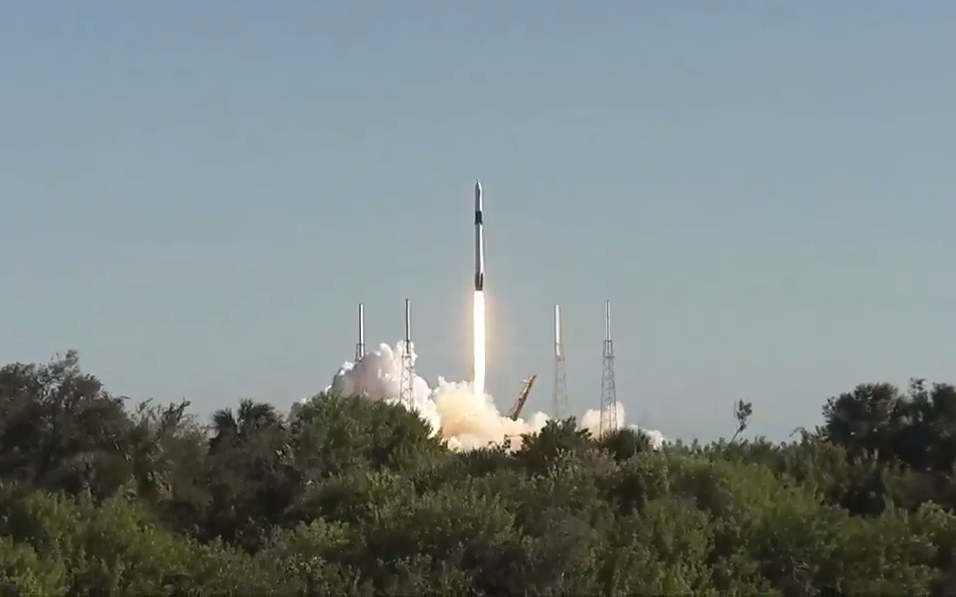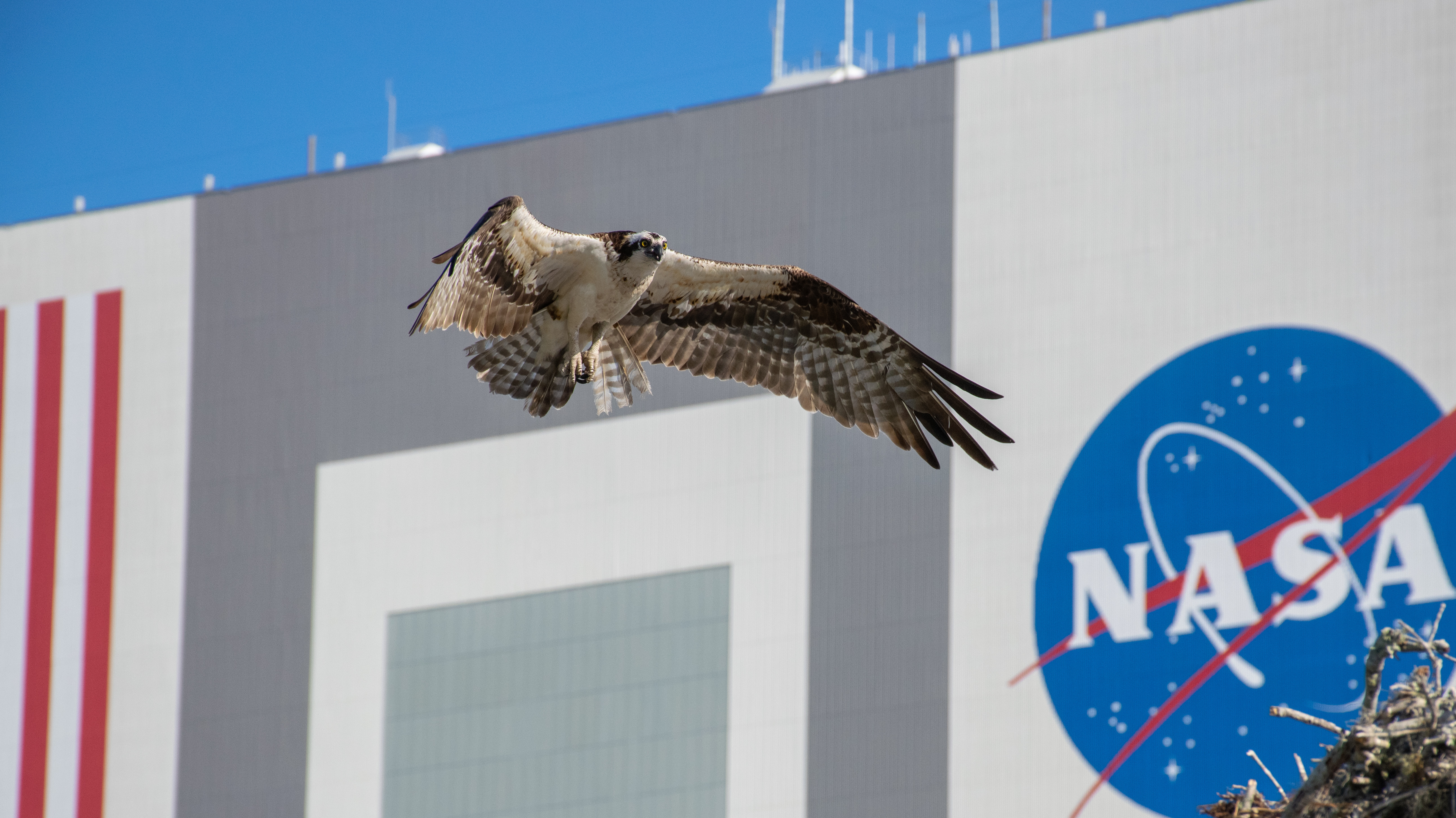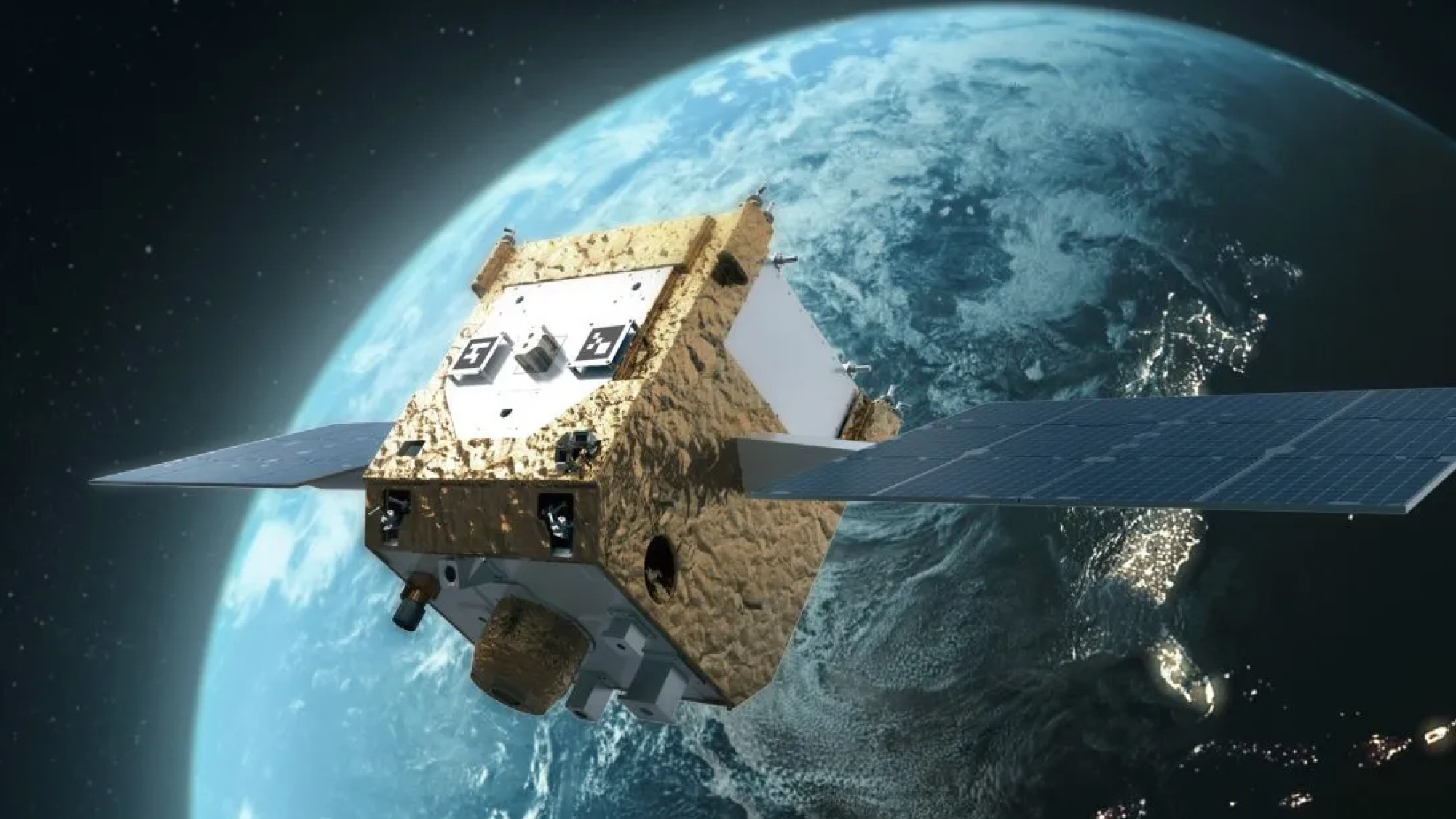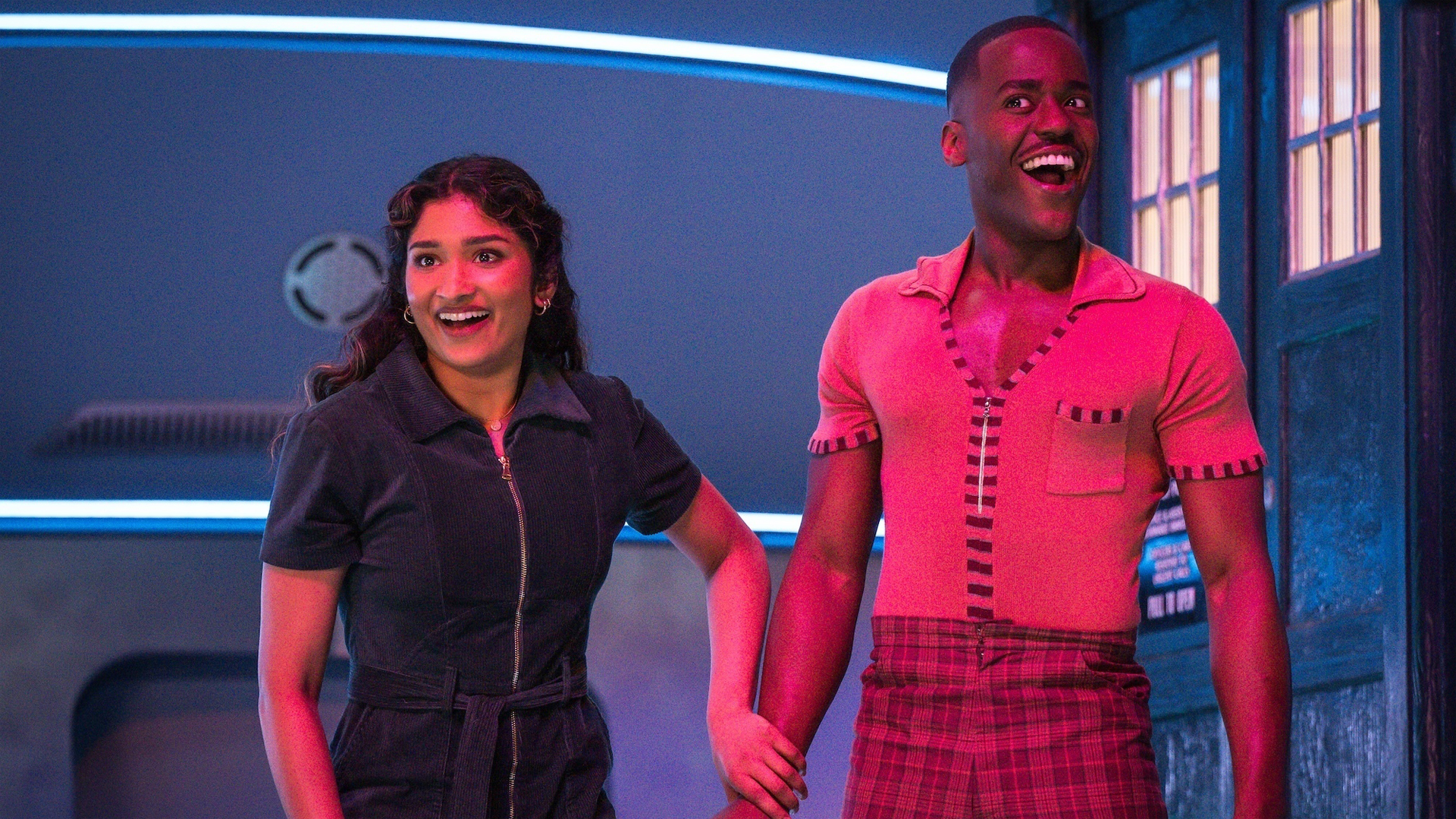SpaceX Launches Dragon Cargo Ship to Space Station, But Misses Rocket Landing
SpaceX's Dragon spacecraft lifted off into clear blue skies today (Dec. 5), carrying more than 2 tons of crew supplies, science investigations and equipment toward the International Space Station — but the Falcon 9 rocket's first stage spiraled down in a failed landing.
According to SpaceX CEO Elon Musk on Twitter, a hydraulic pump on one of the first stage grid fins stalled, so the booster ended up splashing down in the Atlantic Ocean rather than coming in for a landing at a pad at Cape Canaveral Air Force Station (CCAFS) in Florida. The rocket landing was not required for SpaceX's main mission: delivering 5,600 lbs. (2,500 kilograms) of supplies to the space station's six-person crew.
The Falcon 9 launched its Dragon spacecraft at 1:16 p.m. EST (1816 GMT) from the CCAFS and will catch up with the space station over the next few days before astronauts grapple it with the station's robotic arm on Saturday (Dec. 8). This mission, CRS-16, is the second time this Dragon spacecraft has made the trip; it also flew to space as part of the CRS-10 mission in 2017. The mission also marks SpaceX's 20th launch of the year.

SpaceX representatives confirmed the success of Dragon's trip into orbit, adding that they will use telemetry from the Falcon 9's first-stage booster to better understand why it's landing attempt failed.
"The first stage did land in the water," SpaceX spokesperson John Insprucker said during a live webcast. "Now, the good news is we've got a lot of telemetry from it, so we'll be able to understand what happened and work to improve reliability as we always do here at SpaceX."
"Second stage went into great orbit, it was really precise," he added. "Dragon, you saw separate, and now the solar arrays coming out. All told, another great day for SpaceX and NASA."
The most recent previous landing failure for SpaceX was the core first-stage booster on its debut Falcon Heavy launch; the two side boosters made a flashy synchronized landing, but the central booster crashed. The company's most recent Falcon 9 first stage landing failure was in June 2016. In February, the core stage of SpaceX's new heavy-lift rocket, the Falcon Heavy, just missed its landing on a drone ship in the Atlantic.
Get the Space.com Newsletter
Breaking space news, the latest updates on rocket launches, skywatching events and more!
Moldy mouse chow and more
Today's launch was delayed by a day on short notice thanks to some moldy mouse chow. The mice and their habitat are loaded to the SpaceX Dragon spacecraft shortly before launch; because of possible contamination after finding mold on a small portion of the food bars, the launch crew also had to unload the rest of the bars, which had been loaded earlier deeper in the spacecraft, and get supplies to replace them. Though the launch team tried to get everything back in place for a Tuesday liftoff, they couldn't quite make it work — hence a delay to the following day.
The nonmoldy food bars and their corresponding mice, which will support the study of aging-related effects in space, are among the components for 38 new investigations on the Dragon spacecraft, NASA officials said. Another investigation, which will study muscle degeneration, will make use of 36,000 tiny worms. By the end of the mission, they will have reproduced enough to grow their population to between 2 million and 3 million, the study's principal investigator, Timothy Etheridge of the University of Exeter, told Space.com.
The spacecraft will also carry a module to test robotically refueling liquid methane; an instrument that will use near-infrared lasers to measure the heights of Earth's forests; an experiment that will measure how bacteria biofilms grow in microgravity; a setup to grow large, pure protein crystals for analysis; and two student projects from NASA's and Marvel's "Guardians of the Galaxy" Space Station Challenge. Those projects will test dental glue and a plant-watering process for space.
Space traffic jam in orbit
When the Dragon arrives, it will join five other spacecraft already at the station. According to NASA officials, there are two Russian Soyuz spacecraft, which bring crewmembers to the station; two Russian Progress spacecraft; and Northrop Grumman's Cygnus spacecraft. Six spacecraft is the maximum the space station has held, according to NASA spokesperson Dan Huot.
And the Dragon brings a special treat for one class of spacecraft: It's carrying a satellite deployment system called SlingShot that can fit inside the Cygnus spacecraft's berth to deploy up to 18 cubesats. According to the CRS-16 mission overview, after the Cygnus leaves the space station for the first time, it can navigate to a higher orbit and release the cubesats.
The International Space Station currently has six crewmembers; three arrived Monday (Dec. 3), and three have been there since June. The Monday Soyuz trip marked the first crew flight since an anomaly during launch grounded another crew in October.
European Space Agency astronaut Alexander Gerst, NASA astronaut Serena Auñón-Chancellor and Russian cosmonaut Sergey Prokopyev will head back to Earth Dec. 20 after six and a half months in space — but not before helping out with unpacking the Dragon! Newcomers Russian cosmonaut Oleg Kononenko, NASA astronaut Anne McClain and Canadian astronaut David Saint-Jacques will stay until June.
The Dragon spacecraft itself should leave the station and head back to Earth in January, according to Kirt Costello, ISS program chief scientist at Johnson Space Center. In that return, the Dragon will bring back equipment and experiments for analysis — including, most likely, 20 mice and millions of worms.
Email Sarah Lewin at slewin@space.com or follow her @SarahExplains. Follow us on Twitter @Spacedotcom and on Facebook. Original article on Space.com.
Join our Space Forums to keep talking space on the latest missions, night sky and more! And if you have a news tip, correction or comment, let us know at: community@space.com.

Sarah Lewin started writing for Space.com in June of 2015 as a Staff Writer and became Associate Editor in 2019 . Her work has been featured by Scientific American, IEEE Spectrum, Quanta Magazine, Wired, The Scientist, Science Friday and WGBH's Inside NOVA. Sarah has an MA from NYU's Science, Health and Environmental Reporting Program and an AB in mathematics from Brown University. When not writing, reading or thinking about space, Sarah enjoys musical theatre and mathematical papercraft. She is currently Assistant News Editor at Scientific American. You can follow her on Twitter @SarahExplains.









